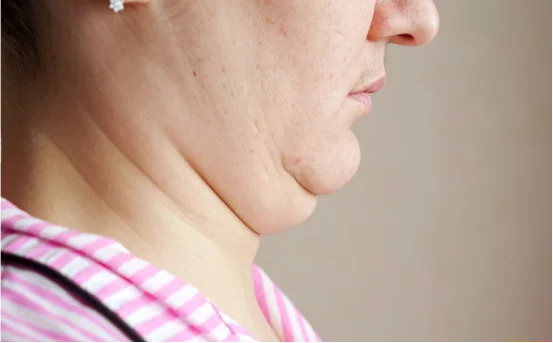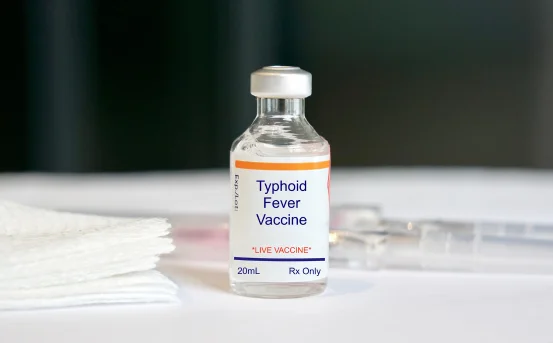Symptoms of chin augmentation is a popular cosmetic procedure designed to enhance the size, shape, and projection of the chin for better facial harmony. Whether you’re considering chin implants or sliding genioplasty, it’s essential to understand the symptoms and side effects associated with chin augmentation, both during recovery and in the long term.
In the world of cosmetic and reconstructive surgery, chin augmentation also known as genioplasty or chin enhancement is gaining immense popularity. A well-defined chin not only enhances your facial profile but also brings better balance to the nose, jawline, and overall facial symmetry. Whether you’re looking to correct a recessed chin, improve your jaw contour, or simply achieve a more sculpted look, chin augmentation can offer transformative results.
What Is Chin Augmentation?
Chin augmentation is a cosmetic surgery procedure aimed at improving the chin’s contour and overall facial proportions. It is typically performed through :-
-
Chin Implants (alloplastic implants): Synthetic materials are placed to enhance chin projection.
-
Sliding Genioplasty (osseous genioplasty): A portion of the chin bone is repositioned to alter shape and size.
Both surgical techniques come with postoperative symptoms, and while many of these are temporary and expected, understanding them can help ease anxiety and promote smoother healing.
Common Symptoms of Chin Augmentation Surgery
Swelling
Swelling is the most common and expected symptom after chin augmentation. It can be mild to moderate, especially during the first 72 hours post-surgery.
-
When it starts :- Immediately after surgery
-
Peak :- Within 2-3 days
-
Resolution :- Gradually improves over 2–3 weeks
You may notice swelling in the lower face, jawline, and even under the chin or neck. Keeping the head elevated and using cold compresses can help reduce it.
Bruising
Some patients develop bruising around the chin, jaw, or even neck area. This happens due to minor trauma during the procedure and is usually not a cause for concern.
-
Color change :- Initially purple or red, gradually turning yellow or green
-
Duration :- Usually resolves within 1–2 weeks
Wearing a compression bandage as advised by your surgeon may reduce bruising and promote faster healing.
Pain or Discomfort
Post-surgical pain is expected, but it is generally manageable with prescribed medications.
-
Pain intensity :- Mild to moderate
-
Common sensation :- Aching, tightness, or tenderness around the chin
-
Duration :- Peaks within the first few days and subsides over a week
It’s crucial to take pain medications on schedule and avoid chewing hard foods that might strain the area.
Tightness or Pressure Sensation
A feeling of tightness or pressure in the chin is very common, especially with chin implants. This sensation occurs as the tissues adjust to the implant or bone shift.
-
Cause :- Skin and soft tissues stretching over a new structure
-
Duration :- May persist for a few weeks, gradually reducing
This is not typically painful, but it may feel strange initially.
Numbness or Tingling
Temporary numbness or tingling in the lower lip, chin, or surrounding areas can occur due to nerve irritation during surgery.
-
Cause :- Minor trauma or manipulation of the mental nerve
-
Common areas :- Chin, lower lip, sometimes teeth
-
Resolution :- Gradual; usually improves within 6 weeks to a few months
In rare cases, numbness may persist longer, particularly after sliding genioplasty, which involves bone repositioning.
Stiffness or Limited Jaw Movement
Some patients report stiffness in the jaw or difficulty opening the mouth wide post-surgery.
-
Why it happens :- Swelling and tissue inflammation near the jaw muscles
-
Impact :- Affects chewing or speaking briefly
-
Improvement :- Gradual return to normal in 1–2 weeks
Gentle jaw exercises may be recommended after the initial recovery phase.
Redness or Itching Around the Incision
Whether your surgeon used an internal (intraoral) or external incision, you may experience redness, itching, or mild irritation during healing.
-
Redness :- Common during the first week
-
Itching :- A sign of healing; avoid scratching
-
Scar formation :- Usually minimal and fades with time
Keep the area clean and follow wound care instructions to avoid infections.
Less Common But Possible Symptoms of Chin Augmentation
Asymmetry or Uneven Appearance
Mild asymmetry can be present initially due to swelling. However, if it persists beyond a few weeks, consult your surgeon.
-
Initial asymmetry :- Normal, resolves with swelling
-
Long-term asymmetry :- May require revision in rare cases
Hematoma or Fluid Accumulation
In rare cases, patients may experience a hematoma (blood collection) or seroma (fluid buildup) at the surgical site.
-
Symptoms :- Sudden swelling, firmness, or change in color
-
Action :- Requires prompt medical evaluation
Infection
Although uncommon with sterile surgical techniques, infection can occur.
-
Signs :- Fever, redness, pus discharge, worsening pain
-
Timing :- Usually within the first 7 days
-
Treatment :- Antibiotics or minor surgical drainage
Implant Shifting or Rejection (in case of chin implants)
An extremely rare complication is implant displacement or rejection.
-
Symptoms :- Noticeable implant movement, persistent discomfort, or extrusion
-
Resolution :- Surgical revision may be necessary
Tips for Managing Postoperative Symptoms
-
Sleep with your head elevated for the first week to reduce swelling.
-
Use cold compresses (not directly on skin) for 10–15 minutes several times daily.
-
Avoid strenuous activity or bending forward for at least two weeks.
-
Stick to soft foods during the initial recovery period.
-
Follow all post-op instructions and attend your follow-up visits.
When to Call Your Surgeon?
You should contact your surgeon immediately if you experience :-
-
Fever over 101°F (38.3°C)
-
Sudden increase in swelling or pain
-
Persistent bleeding
-
Signs of infection at the incision site
-
Trouble breathing or swallowing (very rare)
Early detection of complications leads to faster and safer resolution.
Conclusion
Chin augmentation can greatly enhance your facial balance and confidence. Most symptoms after chin augmentation such as swelling, numbness, and discomfort—are normal parts of the healing process and tend to resolve on their own. However, staying informed about which symptoms are typical and which are red flags can make your recovery journey smoother and more reassuring.























